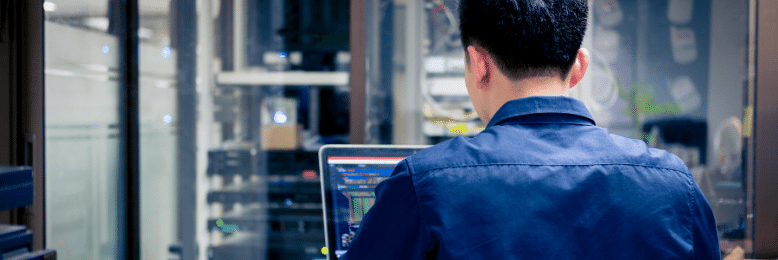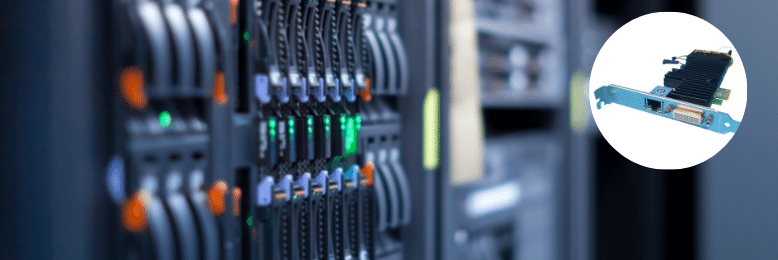What is a Remote Access Card?
December 9th, 2021 | 4 min. read

Servers can get really expensive, really fast. According to Tom Andrulis, ITS CEO, on-premise servers can cost as low as $5000 to over $20000 depending on the specs you need.
Choosing which parts are essential for a company server can help cut these costs - or at least manage it, so it’s not so damaging to your budget.
And one of these essential parts is the remote access card.
In this article, we’ll tackle:
- What a remote access card is
- The uses of a remote access card
- The security risks of a remote access card
- If businesses still need a remote access card
By the end of this article, you’ll have a clear idea of what a remote access card is for and why you’re better off having one in your on-premise server.
What is a remote access card?
A remote-access card is a piece of hardware that allows IT staff to access the server anywhere and anytime (well, as long as you have internet).
Kyle Ramirez, a Technical Sales Engineer at ITS San Francisco, described the process of choosing a remote access card and how it was similar to choosing the other parts of the server.
“Some common server manufacturers are Dell, HP, Supermicro,” he explained, “and each of them has their brand of a remote access card. It’s a piece of physical hardware that slots into the device that’s usually pre-installed.”
Ramirez clarified that you can still choose to install a specialized remote access card. “You can choose different levels based upon the different manufacturers.”
He also explained that a remote access card is always on. It always receives power.
“It has its own Ethernet port,” he said. “It has its own kind of software built-in, and even if the server is off, as long as it’s plugged in and still receiving power, the remote access card will also have power.”
Constantly having power is essential in controlling the server remotely.
Uses of a Remote Access Card

The ability to control a server remotely has many practical uses. The top three uses are:
- Turning a server on or off
- Checking the state of the device
- Using a Virtual Console
Ramirez explained that the most common use of a remote access card was to turn a server on or off during power interruptions.
Ramirez shared, “So I’m on the helpdesk, and I get a ticket that the server for a client went down. I get an offline ticket. If I look at my remote management and other machines are online, I know the network isn’t down; it’s just the physical server.”
“You can click a little link on this remote access card interface, and it will power the device back on remotely.”
You won’t have to wait for an on-site technician to fix issues with your server. It saves your business from downtime and is necessary for businesses that rely heavily on continuous customer communication.
Aside from using a remote access card to turn a server on or off, you can also check the device’s state.
“In that administrator console for the remote access card,” he continued, “the first thing you can do is see what’s the state of the device and if it is in a healthy state. Are there any errors?”
The second most commonly used feature of a remote access card, according to Ramirez, is the Virtual Console.
“The second biggest feature is something called Virtual Console,” he explained. “Well, at least for Dell, it’s called Virtual Console. This allows you to remotely view the monitor even if there’s not a monitor plugged in.
“You can view the desktop of the server, and you can control the server with keyboard, mouse, and video the same as if you were physically in front of it.”
Security Risks of a Remote Access Card
The general rule is that a remote access card is safest when not connected to the internet.
According to Ramirez, a remote access card isn’t inherently a security risk if you don’t have it available over a public IP address.
He explained it like this:
“There’s not a data link between the remote access card and the data tables or the arrays within [a physical server], so your data is safe. If somebody has access to the remote access card, it’s typically in a separate zone from the rest of the server.”
He continued, “Remote access cards also operate over TLS/SSL. So there’s an SSL certificate for it, and you can choose to get a publicly trusted certificate instead of using the self-signed certificate. You can apply some security configurations to remote access cards, but the card is not inherently a security risk.
Do Businesses Need a Remote Access Card?

A remote-access card is bundled into your server most of the time. But if not, a remote access card can cost around $500. Do you need it?
Ramirez believes so.
“I think it’s necessary everywhere to reduce the amount of time it takes to troubleshoot issues, especially when on-premise hosts may go down,” he said. “Every physical host should have a remote access card.”
He cautioned, “If you do choose not to get one, then you should be prepared for a longer downtime. If the server goes down physically and it needs to be powered back on, the amount of time it takes to get it back online would basically be how long it takes somebody to drive there and go press the power button.”
Ready to get a Remote Access Card for Your Server?
Remember that a remote access card is a piece of hardware in a server that allows IT staff to access the server anywhere and anytime through the internet.
It significantly lessens your downtime during power outages and can allow IT staff to check the device remotely.
It is also usually included in server packages, but you can buy it separately for about $500.
Despite the seemingly small amount, you still need to balance what your business needs with the amount of money you spend. And at Intelligent Technical Solutions, we’ve helped business owners make informed decisions about what they’re buying and why.
To continue your research about remote access cards and on-premise servers, read “How Much Does a Server Cost? [All Factors Explained].” This will help you estimate how much money you need to spend and why.
Kharmela Mindanao is a senior content writer for Intelligent Technical Solutions. She’s called Ella by her friends and likes yoga, literature, and mountain climbing. Her favorite book is Anxious People by Fredrik Backman. She creates art and poetry and is on a quest to find the best cheesecake.
Topics:
